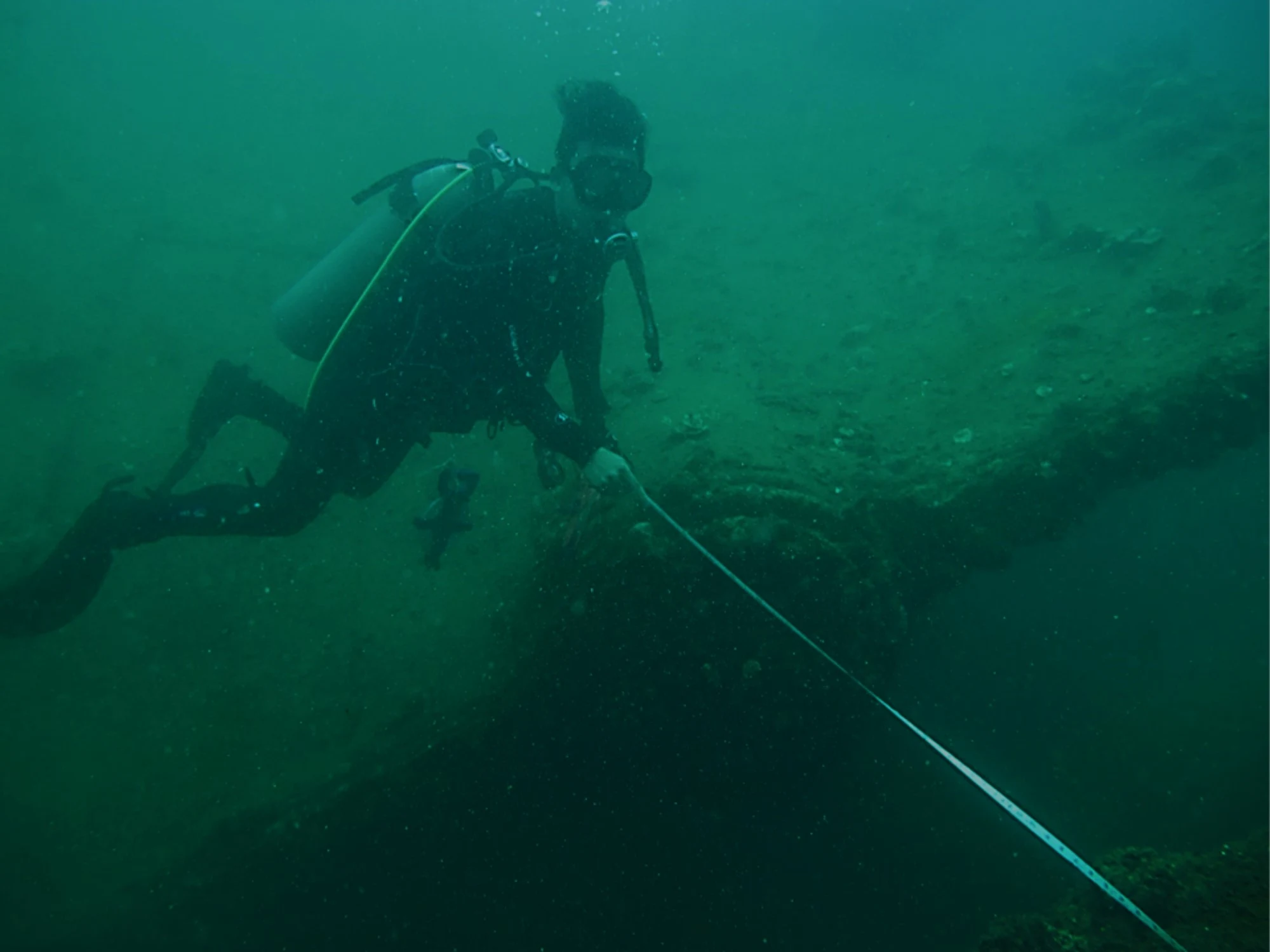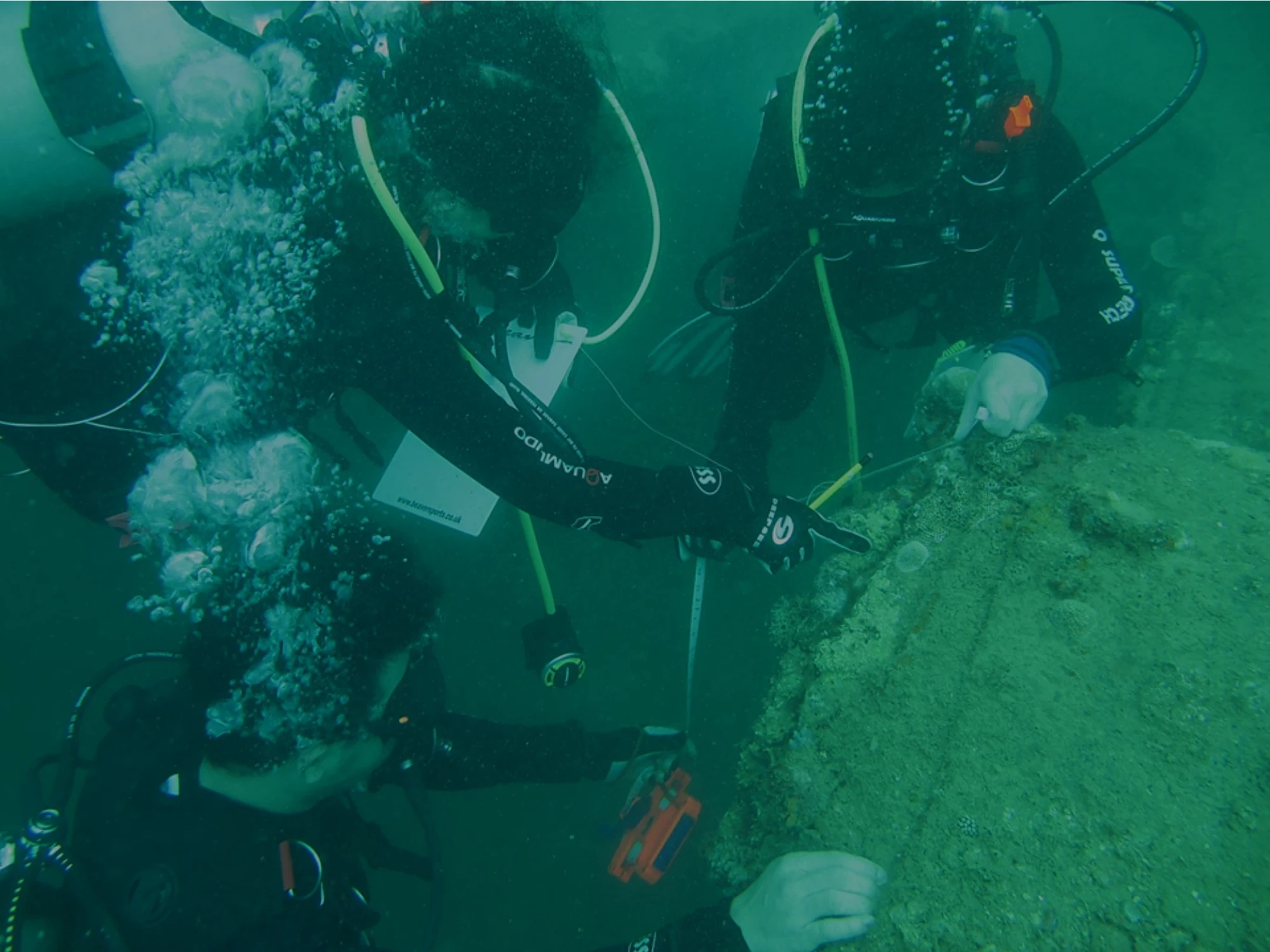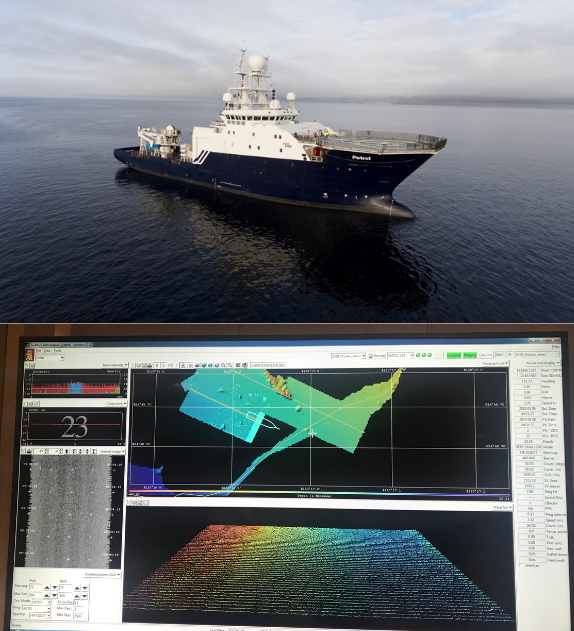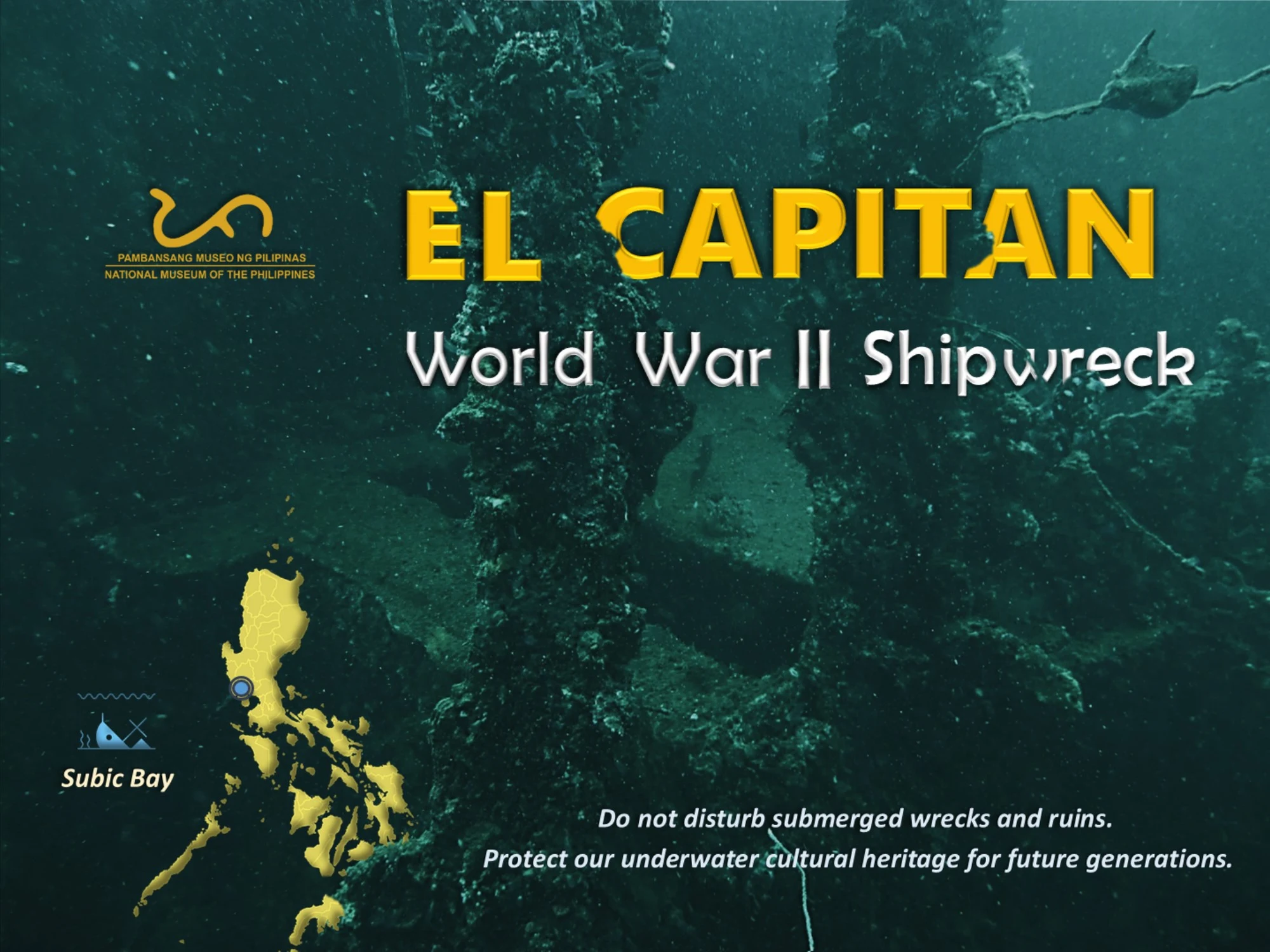World Naval History - The most known World War II Shipwrecks - El Capitan, in Subic Bay, Zambales
Subic Bay played a significant role in world naval history. The Spaniards discovered its strategic location for sheltering vessels and ports and built the first naval station in 1885. It also served as a battlefield during the Spanish-American War in 1898.
 |
| Marine growth on the ship's rudder |
When the Americans gained control over the Philippines, they established and developed a major naval facility and military reservation in Subic which was eventually turned over to the Philippines in 1992. Subic Bay also served as a battleground in World War II, where the Japanese forces maintained a shipbuilding facility. This resulted to several sinking of ships within the area.
Presently, Subic Bay houses a large number of historical ship, aircraft and vehicle wrecks. These wreck sites are part of our Underwater Cultural Heritage (UCH) and are currently vulnerable to a wide range of threats from human activities and natural processes. With advanced technology, wreck sites have become more accessible to divers and salvagers, making them more vulnerable to damage. With these growing issues, the management of UCH and progress of underwater archaeology is a priority and a challenge as well. One of the most accessible and popular diving sites in Subic Bay is the USS Majaba, more commonly known as the El Capitan.
 |
| Illustrations of the ship's rudder and possible gun platform |
USS El Capitan was built in 1919 and initially named as SS Meriden then later renamed to El Capitan in 1923. It was acquired by the US Navy in 1942 then commissioned to service and converted to a miscellaneous auxiliary named USS Majaba (AG-43). It is approximately 80-90 meters long and has a cargo capacity of 13,400 ft3.
The ship was deployed between Hawaii Islands in the South Pacific to bring supplies for the American forces battling the Japanese over the control of Guadalcanal. Guadalcanal was an important island for the Americans and vital to the Japanese for strategic position assaults. On November 7, 1942, the IJN submarine HA-11 fired a torpedo and struck the starboard side of El Capitan, resulting the destruction of its engine room and boilers. Though it suffered immense damaged, it did not sink and was transported to Solomon Islands for repair. It returned to Subic Bay and was placed out of service and decommissioned in 1946. The ship sunk at its dock on Ilanin Bay in July 14, 1946. The USS Majaba earned one battle star for its service in the World War II.
 |
| Measuring and documenting the ship's part |
The National Museum of the Philippines has conducted field explorations and surveys on different Subic Bay shipwrecks since the 1990’s as part of its Cultural Heritage Management.
 |
| Measuring and documenting the ship's rudder |
In 2019, surveys were conducted on El Capitan to document and monitor its condition for the protection and management plan of the Subic Bay shipwrecks. El Capitan is situated approximately 10-22 meters below sea level. The absence of obvious explosive damage confirmed historical records that the ship did not sink in action. Parts of the shipwreck such as the rudder and a possible forward gun platform were measured and documented. We also coordinated with Subic Bay Metropolitan Authority which is the primary authority over the Subic Bay Freeport Zone.
World War II wrecks in shallow waters are more accessible to illegal salvagers that destroys the metal parts of the wrecks for wholesale purposes. Many of these sites are war graves and regarded with respect for the troops and the countries they fought for.
Besides their historical significance, these wrecks embody our cultural heritage.
If you have knowledge of underwater sites being looted or destroyed, report immediately to local government authorities or contact the nearest #NationalMuseumPH office. Let us all take part in protecting our cultural heritage for future generations.
The Oryoku Maru, also called a hell ship.
Have you ever heard of hell ships? We also feature here another World War II shipwreck in Subic Bay - the Oryoku Maru, also called a hell ship.
 |
| Aerial image Oryoku Maru burning at Subic Bay after the attack on 15 December 1944, with POWs (white dots) swimming away from the ship (Photo: U.S. Navy, Public Domain) |
During the World War II, Allied Prisoners of War (POWs) were transported in Japanese merchant ships across Asia to work as slave laborers to support the Japanese war effort. These vessels that turned into prison ships were called “hell ships” because of the extremely inhumane living conditions of POWs onboard.
In December 1944, the Japanese Fleet Carrier Ship Oryoku Maru carried around 1,620 POWs to be taken to Japan to work in labor camps. Several POWs died through injuries, starvation, suffocation, and other brutal causes. As the ship proceeded to Olongapo across Subic Bay, it was relentlessly bombed by American planes from USS Hornet causing it to sink. Other prisoners were able to swim to the shore, however, about 270 POWs reportedly died onboard.
 |
| The Research Vessel Petrel and the screenshot of the Multibeam Echosounder Sonar (MBES) scanning of Oryoku Maru in Subic Bay. |
The wreck lies 17–25 m deep, 400 m from Alava Pier. There is poor visibility on the site and the wreck has reportedly undergone extensive scuttling. Currently, the Subic Bay Metropolitan Authority (SBMA), the primary authority over the Subic Bay Freeport Zone, has closed the site for all diving activities.
The National Museum of the Philippines (NMP) has conducted field explorations and surveys on different Subic Bay shipwrecks since 1990s as part of its Cultural Heritage Management. In 2019, the NMP coordinated with RV Petrel to conduct preliminary surveys of Subic Bay shipwrecks, including the Oryoku Maru, using Multibeam Echosounder sonar.
World War II wrecks in shallow waters are more accessible to illegal salvagers that destroy the metal parts of the wrecks for wholesale purposes. The advancement of technology has also made these wrecks more accessible to divers and salvagers, making them more vulnerable to damage. In fact, there have been reported looting of scrap metals in Subic Bay shipwrecks.
 |
| The Hell Ships Memorial in Subic, which honors the World War II Prisoners of War. |
Many of these sites are war graves and regarded with respect for the troops, as well as the countries for which they fought. Apart from their historical significance, these wrecks embody our cultural heritage. If you have knowledge of underwater sites being looted or destroyed, report immediately to local government authorities, or contact the nearest NMP office. Let us all take part in protecting our cultural heritage for future generations.
_______________
Text and poster by Rachelle Ureta | NMP MUCHD
© National Museum of the Philippines (2021)




No comments:
Got Something to Say? Thoughts? Additional Information?